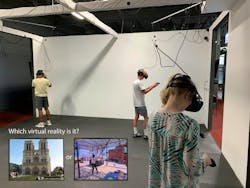Thinking Global? Cultural Competency a Top Priority for the Future of Interior Design
Globalization is a major driver for competition, growth and innovation, and it’s all around us. Just about every product we own is a globalized nexus of interconnected parts that were manufactured somewhere else.
Globalism has a world perspective where different nations and people cooperate despite being different.
An outgrowth of globalism is the creation of larger international markets which, among other things, are fueled by resources and population growth. Larger markets and populations amount to larger demands for professional services.
Since 1975, the global population has grown by 1 billion every 12 years, according to the World Bank. China and India have grown to become the most populous countries in the world.
Together, they represent every 1 in 3 people of the earth’s population. In Global Interior Design Report, analysts predict the global interior design market to reach 8.5% compound annual growth rate by revenue by 20242.
The Asia-Pacific, India, and fast-growing China will occupy far more of the future contract design market share in the following years.
As businesses develop bigger and better cooperative networks to work across continental borders, they need design professionals that are equally adept at working across different nationalities, ethnicities, labor customs and social norms.
Thus, globalization will need to become a top priority for interior designers working in today’s global economy.
Consider Technology and Culture in Design
The designer of the future must be technologically skilled and culturally savvy to navigate new-world challenges amid a changing demographic landscape.
Given the current quality of teaching, educators are turning their attention to cultural competency training as a way to respond to the diverse needs of a global society.
[Related: EDspaces Classroom Designs Showcase Trends in Educational Settings]
Put simply: cultural competency is a set of values, beliefs, behaviors and skills that come together to enable individuals and organizations to work effectively in cross-cultural situations.
Unfortunately, becoming culturally competent has been a challenge in both public schools and higher education. Historically this was accomplished by completing the ”grand tour”—when a novice spent a year traveling across Europe to finish a design education.
But, does a designer need to purchase a plane ticket to experience another culture? While it may be impossible to transport a whole classroom of students to another country, some educators are using technology to do just that.
Technology provides instant access to global information. Wherever you are, there is an expectation that you are connected to the rest of the world at the touch of a button.
Immersive technologies such as augmented reality (AR) and virtual reality (VR) are powerful platforms that push the limitations of distance and perception.
Imagine the difference in cultural engagement from looking at an image of Notre Dame cathedral versus standing inside of Notre Dame cathedral virtually (before the fire) simply by wearing a piece of technology.
Interior Design educators need to identify ways to foster cultural competency in the early stages of a student’s development.
[Read also: RxArt Comforts Young Patients With Imaginative Art for Children’s Hospitals]
I teach interior design and wonder how students develop cross-cultural skills to become globally responsive designers. In some contexts, the culturally competent designer is the outsider who seeks a mutualistic relationship with the insider.
Take a Global View
When my students design for foreign clients, they often fail to recognize the subjective nature of the insider’s culture as it’s defined and redefined by its cultural members.
They fail because they lack an insider’s perspective. The common result is an interior that may look good on the outside but lack a cross-pollination of two different cultural expertise (the “local” vs. the ”guest”).
Interior designers have the power to transform—not just space but themselves and others. A paradigm shift would be to view cultural competency as a criterion that brings value to design.
How important a concern is it for the interior designers? Very important. We plan for the future for our clients. We also need to plan for our own future, a future that considers a global perspective.
About Kevin Woolley: Dr. Kevin H. Woolley is a professional designer, professor and interdisciplinary scholar coming to Purdue after working for 10 ½ years internationally at Virginia Commonwealth University’s overseas campus in Doha, Qatar. Woolley’s research area focuses on the intersections of knowledge, social responsibility, and design.
Read this next: Macy’s Lights Up New Color STORY Installation
